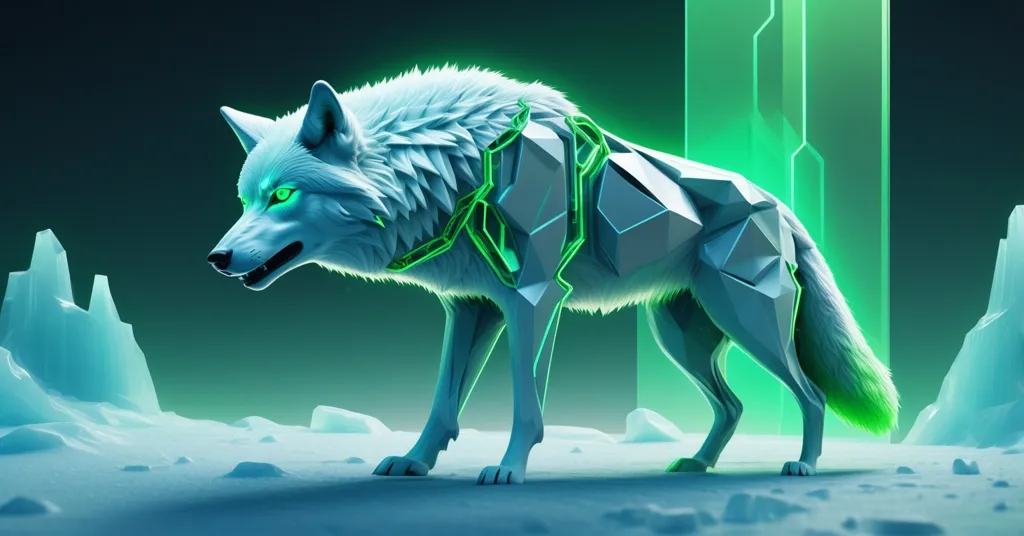XRP Tundra Presale Hits $1.5M: Transparency and Dual-Chain Innovation in Focus

Crypto Presale Spotlight: XRP Tundra Raises $1.5M with Transparency and Dual-Chain Design
A standout has emerged in the frenzied 2025 cryptocurrency presale market: XRP Tundra, a project that’s pulled in over $1.5 million from more than 11,600 participants as it powers through Phase 7 of its token sale. With a transparent pricing model and a dual-chain architecture spanning the XRP Ledger and Solana, it’s positioning itself as a potential game-changer—though the icy waters of presale risks are never far from view.
- Funding Success: Over $1.5M raised with 11,600+ participants in Phase 7.
- Token Pricing: TUNDRA-S at $0.12 with a 13% bonus; TUNDRA-X free at $0.06 reference price.
- Key Features: Dual-chain setup, multiple audits, public KYC, and an ambitious DeFi roadmap.
Breaking the Presale Mold with Fixed Pricing
XRP Tundra isn’t your typical presale peddling delusional get-rich-quick schemes. For those new to the crypto game, a presale is an early funding stage where investors snag tokens at a discounted rate before they list on public exchanges—a high-stakes bet with the potential for massive gains or catastrophic losses. XRP Tundra operates on two blockchains: the XRP Ledger (XRPL), known for fast, low-cost transactions often linked to Ripple’s payment systems, and Solana, a high-speed network favored for decentralized finance (DeFi) due to its scalability. The project offers two tokens: TUNDRA-S, a utility and yield token on Solana priced at $0.12 in the current phase with a 13% bonus for buyers, and TUNDRA-X, a governance and reserve token on XRPL, currently free with a reference price of $0.06. Post-presale, the listing targets are set at a lofty $2.5 for TUNDRA-S and $1.25 for TUNDRA-X, dangling the carrot of substantial returns. But before you start dreaming of Lambos, let’s cut through the hype and dig into what’s really on offer.
Transparency is where XRP Tundra seeks to melt the skepticism surrounding presales. Unlike many projects that play pricing like a shady shell game with sudden spikes or hidden fees, this one locks in fixed prices for each phase, ensuring you know exactly what you’re shelling out. They’ve also prioritized security, with smart contracts—the coded rules dictating how tokens function—audited by Cyberscope for core logic, Solidproof for liquidity management, and FreshCoins for administrative controls. Liquidity locks are in place to prevent developers from yanking funds out of trading pools (a common scam tactic known as a rug pull), and on-chain data verifies supply caps and distribution ratios for anyone to check. For good measure, the team’s leadership has completed public KYC (Know Your Customer) verification via Vital Block, meaning their identities are documented—not just faceless avatars on a Discord server. It’s a rare level of accountability in a market often resembling the Wild West. For more details on their impressive funding milestone, check out this report on XRP Tundra’s $1.5M presale success.
Dual-Chain Design: Genius or Overcomplicated?
The dual-chain setup is a core selling point for XRP Tundra, and it’s worth unpacking. By splitting operations between Solana and XRPL, the project aims to sidestep the congestion that cripples single-chain systems during peak usage. Solana hosts TUNDRA-S for utility and yield functions, making it a fit for DeFi activities like staking (locking up tokens to earn rewards) or lending (loaning out crypto for interest). Meanwhile, XRPL manages TUNDRA-X for governance and reserves, leveraging its efficiency for voting mechanisms and asset storage. Picture a user fed up with Ethereum’s gas fees—those exorbitant transaction costs during network spikes—finding relief in Solana’s speed for day-to-day DeFi plays, while XRPL handles the backend decision-making without clogging the system. This separation also boosts auditability, as each chain’s role is distinct and easier to scrutinize.
But let’s play devil’s advocate: is this dual-chain approach truly innovative, or just a flashy gimmick to stand out in a crowded field? Single-chain projects, while sometimes slower, offer simplicity—users don’t need to juggle wallets or bridge assets between networks, which can be a headache for the less tech-savvy. And cross-chain designs aren’t immune to vulnerabilities; past exploits like the Wormhole bridge hack, where $320 million was stolen due to a flaw in cross-chain tech, remind us that added complexity can mean added risk. If XRP Tundra doesn’t nail the user experience or security across both chains, this “genius” design could become a liability.
Roadmap Ambitions: Bold Plans in a Skeptical Market
Peering into XRP Tundra’s future, the roadmap is stacked with features that could either cement its place in DeFi or leave it as another overhyped casualty. Let’s break it down:
- Cryo Vaults: A staking mechanism for XRP holders to lock up their tokens and earn structured returns, akin to a crypto savings account. If executed well, this could attract XRPL users seeking passive income, but poorly designed yields have tanked projects before—look at Terra/Luna’s unsustainable 20% APY promises.
- GlacierChain: A Layer-2 solution on XRPL for cross-chain asset movement, acting like a side road to ease traffic on the main blockchain highway. It aims to bridge assets between networks more seamlessly, but Layer-2 tech is notoriously tricky to scale without security trade-offs.
- Frost Keys: A system linking staking with governance rights, allowing users to influence project decisions based on their staked holdings. This could empower the community, but low participation often renders such mechanisms meaningless.
- DAMM V2: A liquidity integration on Solana to enhance trading efficiency, potentially reducing slippage in token swaps. It’s a solid idea, though Solana’s crowded DeFi space means fierce competition.
Each of these sounds promising, but can XRP Tundra pull it off in a cutthroat DeFi arena? The crypto graveyard is full of projects with glossy whitepapers that failed to deliver. Execution is everything, and community adoption will make or break these plans.
Community and Adoption: Can It Gain Traction?
Beyond tech and tokenomics, a project’s success hinges on its ability to build a loyal user base. With over 11,600 participants already on board in Phase 7, XRP Tundra shows early signs of interest—a decent figure compared to many 2025 presales that struggle to cross a few thousand. But numbers alone don’t tell the full story. Are these investors long-term believers or just speculative flippers waiting for listing day? Without visible social media buzz or developer activity—data we’d need to dig deeper into—it’s hard to gauge if this is genuine community momentum or fleeting hype. Partnerships could also be a game-changer; if XRP Tundra aligns with established XRPL or Solana protocols, it might tap into existing user bases. For now, that’s speculative, but the presale turnout suggests at least some are betting on its potential.
The Bigger Picture: Risks and 2025 Presale Trends
Zooming out, the 2025 presale market is a chaotic beast. Flashy marketing often drowns out substance, and horror stories like Terra/Luna’s collapse or countless ICO scams have left scars. XRP Tundra’s focus on transparency feels like a direct rebuttal to this mess, positioning it as a breath of fresh air compared to, say, hypothetical Project Y, which might hide its tokenomics behind vague promises. Regulatory scrutiny is also heating up globally, and dual-token, cross-chain models could attract unwanted attention if deemed too complex or prone to misuse. Technical failures loom large too—imagine a cross-chain bug draining funds, or a roadmap delay tanking investor confidence. Even with audits and KYC, there’s no shield against market crashes or simply failing to draw users post-launch.
And those listing targets of $2.5 and $1.25? They reek of ludicrously optimistic bait that smells like a scam waiting to happen. I’m not saying it’s impossible, but price predictions in crypto are usually just fairy tales spun to hook FOMO-driven buyers. We’ve seen too many “guaranteed 100x” pitches turn into total wipeouts. If you’re eyeing XRP Tundra, ignore the hype and focus on fundamentals. Do your own damn research—don’t just swallow what influencers or shills feed you.
Bitcoin Maximalism and the Altcoin Experiment
As Bitcoin maximalists here at Let’s Talk, Bitcoin, we view BTC as the ultimate decentralized money and store of value. It’s the bedrock of this revolution, untainted by the speculative fluff of most altcoins. That said, we’re not blind to the niches others fill. DeFi projects like XRP Tundra experiment in areas Bitcoin isn’t built for—complex smart contracts, high-throughput apps, and yield mechanisms. If successful, they could act as side quests, drawing new users into the crypto fold who might later gravitate to Bitcoin’s unshakable simplicity. Think of it as a gateway drug: dabble in altcoin DeFi, get hooked on decentralization, and eventually park your wealth in BTC. But if these projects flop or dilute focus from Bitcoin’s mission as sound money, they’re just noise. We’re rooting for ecosystem growth, not distraction.
Key Takeaways and Questions to Ponder
- What makes XRP Tundra stand out among 2025 crypto presales?
Its fixed-phase pricing, third-party audits by Cyberscope, Solidproof, and FreshCoins, and public KYC via Vital Block address trust issues head-on, though presales inherently carry risk. - How does the dual-chain model impact users?
Splitting utility on Solana and governance on XRPL aims to cut congestion and boost auditability, but it risks overcomplicating things for users and could expose cross-chain vulnerabilities. - Are XRP Tundra’s roadmap goals feasible in today’s DeFi landscape?
Innovations like Cryo Vaults staking and GlacierChain Layer-2 are intriguing, but execution is critical—history shows ambitious plans often crumble under technical or adoption hurdles. - Is transparency enough to justify investing in XRP Tundra?
It’s a strong foundation, but market volatility, regulatory risks, and speculative presale nature still demand caution; fundamentals, not hype, should guide any decision. - How does XRP Tundra fit into the broader decentralization movement?
Its governance model via TUNDRA-X aligns with community empowerment and resisting centralized control, complementing Bitcoin’s ethos even if it’s not BTC-centric.
Stepping back, XRP Tundra embodies the promise and peril of the DeFi frontier. Its transparent approach and dual-chain innovation could set a new standard for presales, pushing forward the trial-and-error process of disrupting traditional finance—a cause we champion with fervor. At the same time, it’s a speculative gamble in a volatile space where even solid plans can shatter. For every crypto unicorn, there are dozens of cautionary tales. We’re optimistic about efforts toward legitimacy and utility, but we’re also hard-nosed realists. Keep your skepticism razor-sharp, your wallets secure, and your expectations grounded. XRP Tundra might outshine the competition—or it could leave investors stranded in a financial blizzard.



